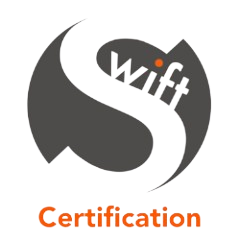At Swift Certification, we often meet businesses who proudly display their ISO certificate on the wall, only to discover that the system behind it is little more than a paper castle. It looks impressive from a distance, but when the winds of a surveillance audit blow through, the structure collapses. Why? Because the certification was never truly embedded into daily operations.
System Collapse Post-Certification: The Surveillance Audit Reality
The initial certification audit can sometimes feel like the finish line. After all, you’ve gathered the documents, passed the checks, and received the certificate. But in reality, it’s only the starting point. Surveillance audits – the annual or biannual follow-ups – are designed to test whether your management system is alive and working in practice, not just on paper.
When a system has been built quickly to “get the certificate”, without genuine integration into processes, it often unravels at this stage. Non-conformities pile up, staff are unaware of procedures, and the certificate risks suspension. The collapse is not just embarrassing; it can cost contracts, credibility, and client trust.
Paperwork vs. Operational Reality: Busting the Myth
One of the most persistent myths in ISO certification is that it’s all about paperwork. Some providers even encourage this misconception, offering “fast-track” certifications that focus on templates and checklists rather than real practices.
But paperwork alone doesn’t keep a workplace safe, reduce environmental impact, or protect customer data. Operational reality does. For example:
- ISO 9001 isn’t about filing quality manuals; it’s about consistently delivering products and services that meet customer expectations.
- ISO 14001 isn’t about a binder of policies; it’s about reducing waste and energy use in day-to-day operations.
- ISO 45001 isn’t about a safety statement; it’s about preventing accidents and protecting workers.
- ISO/IEC 27001 isn’t about a security policy document; it’s about ensuring data is genuinely safeguarded.
When certification is treated as a paperwork exercise, employees disengage, managers lose visibility, and the system becomes brittle. Surveillance audits expose this gap quickly.
Building a Maintainable, Intuitive System for Employees
The antidote to the paper castle is simple: build a system that people actually use. A maintainable, intuitive management system doesn’t overwhelm staff with jargon or unnecessary forms. Instead, it aligns with how the business already works, adding clarity and consistency rather than bureaucracy.
Practical steps include:
- Keep it simple: Use plain language in procedures so employees can follow them without confusion.
- Integrate with daily tools: If your team uses digital platforms, embed ISO processes there instead of creating parallel systems.
- Train and involve staff: Employees should understand not just what to do, but why it matters.
- Review regularly: Small, regular updates prevent the system from becoming outdated or irrelevant.
When employees see the system as a tool that helps them do their jobs better, rather than a burden, it becomes self-sustaining. Surveillance audits then become opportunities to showcase improvement, not moments of dread.
Conclusion: Building Castles That Last
A certificate gained through shortcuts may look impressive, but it’s fragile. At Swift Certification, we believe ISO standards should be a foundation for growth, not a façade. By embedding systems into daily operations, SMEs can avoid the collapse of the paper castle and instead build structures that stand the test of time – resilient, credible, and genuinely valuable.
Ready to get a certification that lasts? Contact our team today for a pragmatic, no-obligation conversation about your needs:




